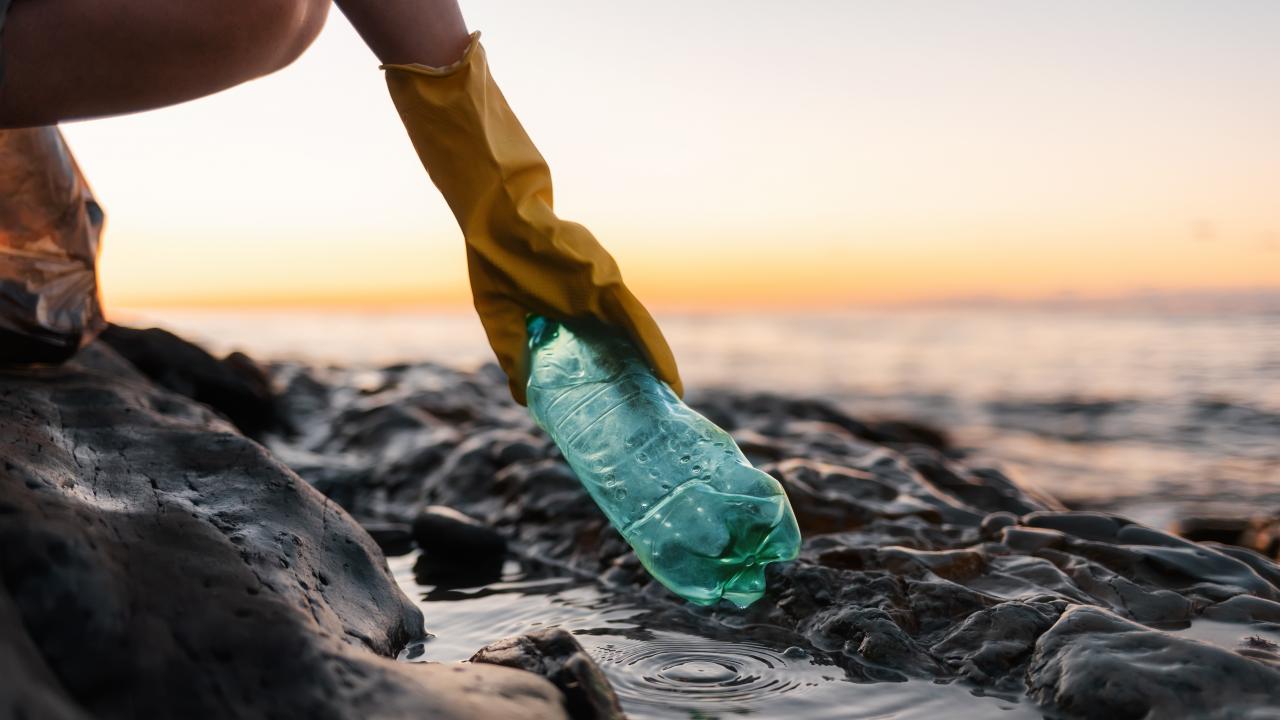Environmental sustainability still neglected too often in humanitarian aid

“The Do no harm-mandate goes above and beyond anything else, so the priority is to get the aid to the people. Unfortunately, this means that most of the time the waste, for example plastic bottles or medical waste, is left behind, in places that tend to already be quite vulnerable with a poor infrastructure”, explains Virva Tuomala, postdoctoral researcher at Hanken School of Economics.
Tuomala has been part of the international WREC-project Opens in new window , which wants to enable humanitarian logistics partners to reduce their impact on the environment. Hanken´s HUMLOG Institute partnered with the Global Logistics Cluster Opens in new window in the framework of the WREC project to produce a baseline study. Tuomala and her colleagues explored the existing academic and practitioner literature and conducted empirical interviews relative to waste management and reverse logistics.
Local procurement might increase the carbon footprint
The initial literature review won best paper Opens in new window at the Nordic Logistics Research Network (NOFOMA) conference 2022. The full study published on the WREC website Opens in new window , found three main factors to be extremely relevant in achieving functioning systems within humanitarian operations: procurement, collaboration and local action.
Local procurement has been hailed as one solution for environmental sustainability, with benefits such as reduced transport costs and emissions, and uplifting the local economy. However, with local procurement you are dependent on what is available locally.
“Let´s say you want to buy tooth brushes and would like to get bamboo ones but there aren´t any available. You then buy what is available, maybe the cheapest ones made wherever. If you do a life cycle analysis, the carbon footprint will probably be bigger in the end. There are always all kinds of trade-offs,” says Virva Tuomala.
According to Tuomala a lot of refugee camps are very efficient in recycling and reusing things, but it can be complicated when you don´t know for how long people will stay at the camp.
“How do you make items, like tarpaulins, long-lasting and reusable but also biodegradable or easily disposed of for those who only use it for a few days. The humanitarian organizations are most likely not coming back to collect the tarpaulins, which they of course should do.”
There are different kinds of grassroots initiatives, where people repurpose things by making for example baskets out of old plastics bags or flipflops out of old car tyres. However, these initiatives are still very small.
Donate money, not supplies
Another problem is people donating supplies in a crisis, not listening to what the aid organizations really need. Ukraine being the most recent example.
“It takes human resources to sort through all the stuff and it causes further environmental damage because the infrastructure is already suffering from war. Donating money is always the best, to trustworthy organizations like the Red Cross or the UN Refugee Agency UNHCR.”
Virva Tuomala highlights the importance of reducing your impact on the environment not only during a humanitarian aid operation but also before and after. It´s all about planning and preparedness, and once again procurement.
“Sometimes supplies such as food and medicine need to be airlifted to reach the beneficiaries, this can’t be helped. But you can think about what kind of food it is, how it´s packaged and whether you have to airlift it all the way or if there are other options.”
Environmental demands from the donors
The study states that the humanitarian organizations should increase their collaboration, both within the sector and with other actors from, for instance, the private sector. Tuomala also talks about the importance of education and awareness.
"There has to be avenues for people to get educated about environmental sustainability and the harm that comes from something as simple as throwing your bottle somewhere.”
Donors making more environmental demands would also be one huge step for environmental sustainability within humanitarian aid.
“The EU, who is a significant donor, has a new policy for humanitarian supply management Opens in new window , which include a lot of environmental sustainability perspectives. It is a great start but the humanitarian world is rather bureaucratic and slow. I hope to see more demands from the donors in the future. And more environmental professionals, like scientists and engineers, in the humanitarian sector.”
Text: Jessica Gustafsson


